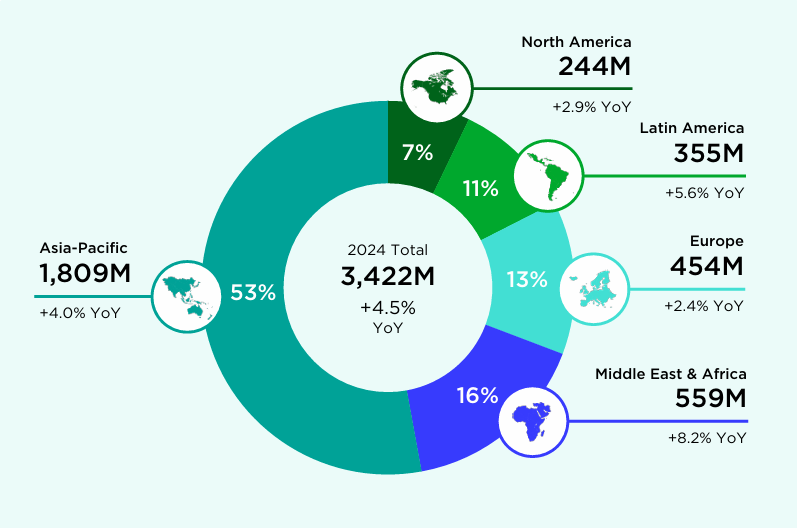A Study on Translation Strategies for Localization of Chinese Elements in Black Myth: Wukong Based on Cultural Adaptation Theory
Abstract
In today’s globalized world, the video game industry has become a major cultural and economic force. Therefore, successful game localization is crucial to bridge cultural gaps. Game localization isn’t just simple language conversion, but a cultural collision. The lack of cultural content in games makes them lose their original meaning and style. Therefore, to make games popular in target markets and respond to the national call for promoting Chinese culture abroad, this paper studies the cultural adaptability in game localization to help them flourish in overseas markets.
This paper takes Black Myth: Wukong, the first Chinese 3A game as a case study. Using the Cultural Adaptation Theory, it analyzes the localization strategies of traditional Chinese cultural elements in the game and how the localization team adapts traditional Chinese cultural elements for a global audience while keeping the essence of Chinese culture.
The research combines Cultural Adaptation Theory with game localization principles, exploring the challenges and solutions in balancing cultural authenticity and accessibility for non - Chinese players. It focuses on strategies for presenting mythological themes, translating cultural - rich language, and creating appealing visual elements. The findings stress the significance of culturally adaptive localization for enhancing the global appeal of Chinese - themed games and offer insights for future projects to bridge cultural gaps in the gaming industry.
Downloads
References
[2] Berry, J. W. (1992). Acculturation and adaptation in a new society. International Migration, 30(s1), 69–85. https://doi.org/10.1111/j.1468-2435.1992.tb00776.x
[3] Boas, F. (1911). The mind of primitive man. Macmillan.
[4] Castles, S., & Miller, M. J. (2009). The age of migration: International population movements in the modern world. Guilford Press.
[5] Chandler, H. M. (2005). The game localization handbook. Charles River Media.
[6] Feng, W. (2022). Beyond text: Visual localization and cultural resonance in Genshin Impact. Game Studies, 22(3), 45–62.
[7] Fishman, J. A. (1991). Reversing language shift: Theoretical and empirical foundations of assistance to threatened languages. Multilingual Matters.
[8] Altagram. (n.d.). Game culturalization. https://altagram.com/game-culturalization-blog/
[9] Hall, E. T. (1976). Beyond culture. Anchor Press/Doubleday.
[10] Luo, D., & Mangiron, C. (2018). Journey to the East: Cultural adaptation of video games for the Chinese market. The Journal of Specialised Translation, 29(1), 149–168.
[11] Mangiron, C., & O’Hagan, M. (2006). Game localisation: Unleashing imagination with ‘restricted’ translation. The Journal of Specialised Translation, 6(1), 10–21.
[12] Yellowbrick. (n.d.). Mastering cultural adaptation in video games. https://www.yellowbrick.co/blog/entertainment/mastering-cultural-adaptation-in-video-games
[13] O’Hagan, M. (2020). Game localization in the age of AI: From text to multimodal adaptation. The Journal of Internationalization and Localization, 7(1), 1–19. https://doi.org/10.1075/jial.00011.oha
[14] O’Hagan, M., & Mangiron, C. (2013). Game localisation: Translating for the global digital entertainment industry. John Benjamins Publishing.
[15] Pangea Localization Services. (n.d.). The critical role of cultural sensitivity in game localization. https://www.pangea.global/blog/the-critical-role-of-cultural-sensitivity-in-game-localization/
[16] Portes, A., & Rumbaut, R. G. (2001). Legacies: The story of the immigrant second generation. University of California Press.
[17] Ruan, S., Li, T., & Zhang, Y. (2021). AI-driven dynamic localization in cross-cultural games: A case study of The Witcher 3. IEEE Transactions on Games, 13(4), 345–357. https://doi.org/10.1109/TG.2020.2980543
[18] Translized. (n.d.). The importance of cultural adaptation in game localization. https://www.translized.com/blog/the-importance-of-cultural-adaptation-in-game-localization
[19] Touiserkani, F. (2024). Adaptation strategies in video game localization: A case study of Civilization. Translation and Interpreting Research, 1(3), 41–52.
[20] Venuti, L. (1995). The translator’s invisibility. Routledge.
[21] Jiang, J. (2022). Comments on localized Chinese translation of international game Call of Duty: Mobile from perspective of cultural adaption [Master’s dissertation, Central South University of Forestry and Technology].
[22] Liu, C., & Yang, W. (2019). Research on the localization translation of online games: Taking League of Legends as an example. Overseas English, 2019(12), 30–32.
[23] Chu, B. (2024). Game localization translation under the guidance of Nord’s text analysis model: A case study of Genshin Impact. English Square, 2024(01), 27–30.
[24] Jinyu Translation. (n.d.). Translation stories in game localization: The challenges of cultural integration. https://www.jinyutrans.com/hotspot/translated_story_for_game_localization
[25] Yang, X. (2024, August 27). The journey of Sun Wukong to the West is underway. Shanghai Securities News.
[26] Zeng, C. (2019). On cultural default and translation compensation in Anthony C. Yu's English version The Journey to the West [Master’s dissertation, Sichuan Normal University].
[27] Zhang, Q. (2024). Cultural confidence in game translation: A case study of the English translation of character names in Black Myth: Wukong. Xuandongman, 2024(1), 13–15.


This work is licensed under a Creative Commons Attribution 4.0 International License.
Copyright for this article is retained by the author(s), with first publication rights granted to the journal.
This is an open-access article distributed under the terms and conditions of the Creative Commons Attribution license (http://creativecommons.org/licenses/by/4.0/).









1.png)









1.png)











